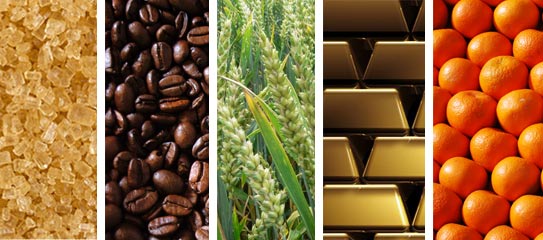Understanding Futures

This is a brief look at understanding futures.
What are futures? Futures are financial contracts obligating the buyer to buy an asset, or the seller to sell an asset either as a physical commodity or financial instrument, at a pre-determined future date and time. This definition brings out some key points. There must be two parties to a futures contract; a buyer and a seller. There must be a commodity or asset to be exchanged, either physically or in the form of financial settlement. There is an expiration date and time when it is expected that all transactions must be settled, and the futures contract is usually standardized so that no party to the transaction is short-changed. As mentioned before, futures are standardized, and this enables them to be traded on futures exchanges. Futures exchanges were setup to provide a level marketplace where parties to the contracts could interact, cut deals and exchange the assets in question. There are several futures exchanges, which cater to futures transactions. There is the COMEX (commodity exchange), a division of the New York Mercantile Exchange, the Chicago Board of Trade (CBOT), and other similar exchanges in Europe and Asia such as the National Stock Exchange of India which provides stock futures trading, the Intercontinental Exchange (ICE) which is Europe’s leading energy futures exchange and the JSE Limited.
What Assets are Traded as Futures?
A wide array of commodities, currencies and stocks are traded as futures. Commodities form the largest bulk of assets traded in the futures markets. Commodities include energy products such as crude oil, natural gas, heating oil; metals such as gold, silver, copper; agricultural products such as corn, wheat, coffee, cocoa; and currencies. Stock indices are also traded as futures. Examples are just about any major stock index you can think of: the Dow, DAX, CAC40, FTSE100, Nikkei225, the Hang Seng, etc. Lately, a number of derivatives products have been created to be traded as futures. An example is the Eurodollar Index on which interest rate swaps (i.e. trading on the future value of interest rates) can be traded. With such a wide array of instruments that can be traded as assets, there is no shortage of buyers and sellers and the trading volumes of the futures exchanges are in billions of dollars. Contracts are standardized and limitations are placed on the number of contracts individuals and corporate entities can buy to ensure constantly high liquidity.
Futures Trading
Futures trading can be done on the floors of the futures exchanges using the “open outcry” system of trading. This was the first style of futures trading practiced, and involves dealers and traders actively trading, shouting out prices and deals being done on the trading floor (or the “pit” as the area is called). Access to the average Joe on the street was limited as only individuals with some reasonable amount of money, and corporate entities could open brokerage accounts and have dealers trade for them actively. With the advent of the internet and several ICT innovations, it became possible to trade futures from a personal computer with an internet connection, using a trading platform provided to traders by futures brokers. This has provided market access to retail traders, thus expanding the depth of the market and increasing liquidity. The futures markets are leveraged markets. This means that it is possible to control large contracts with a small amount of money. This enables forex traders to have the opportunity to make more money with what they have available. Of course, leverage can work against the trader as well. If you never knew that the futures markets are available to you to make money with, you can give it a try.

Register For...
Free Trade Alerts
Education
1-on-1 Support
eToro Copytrader Tips